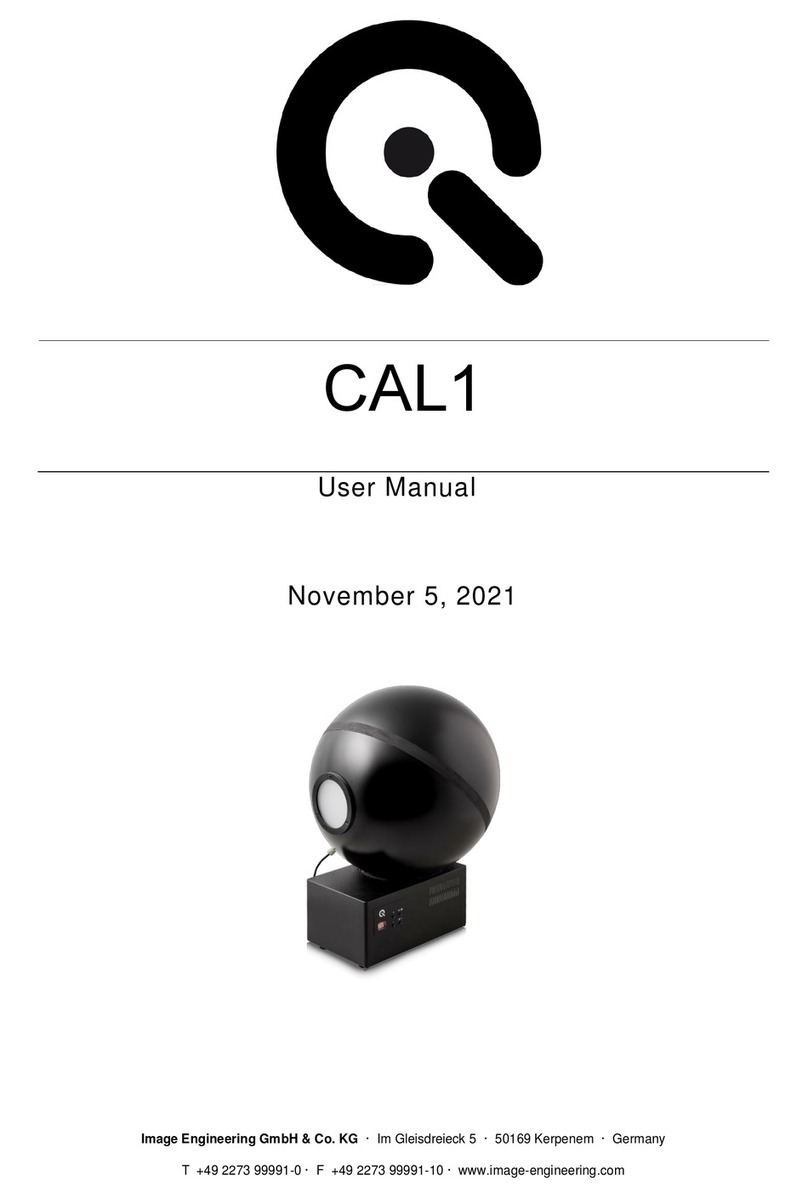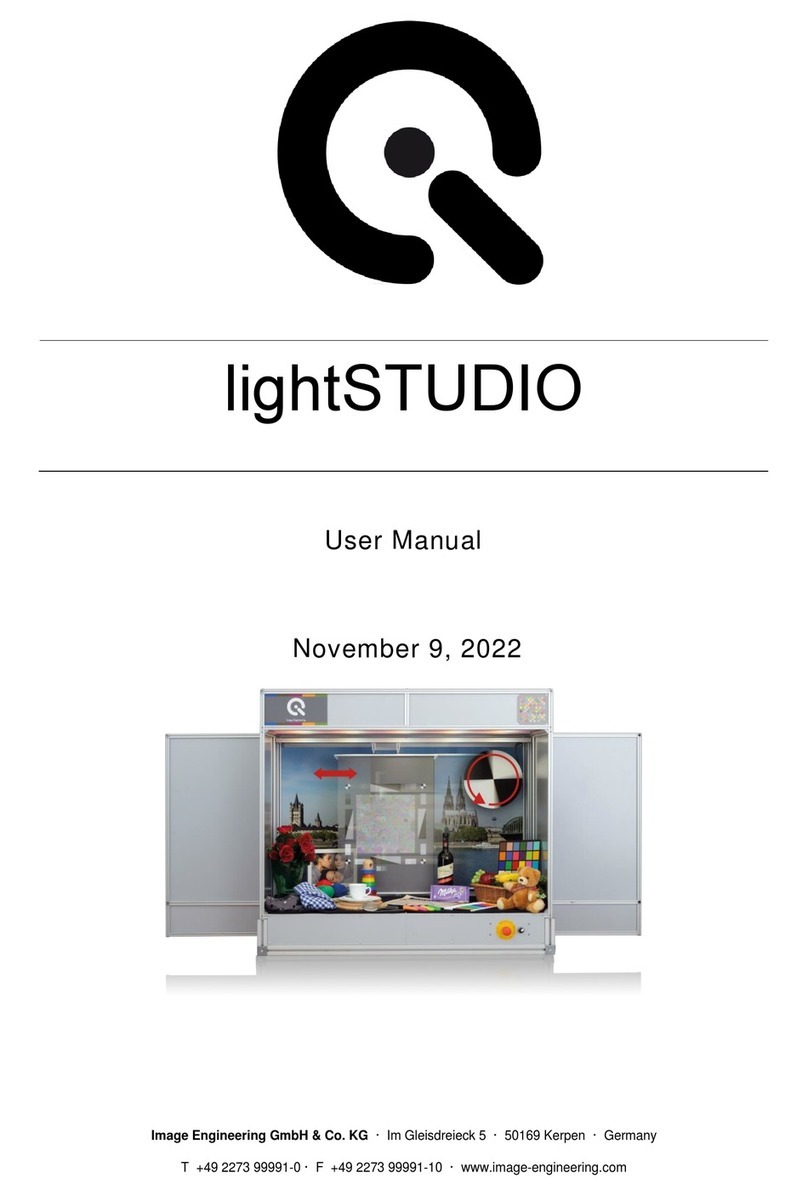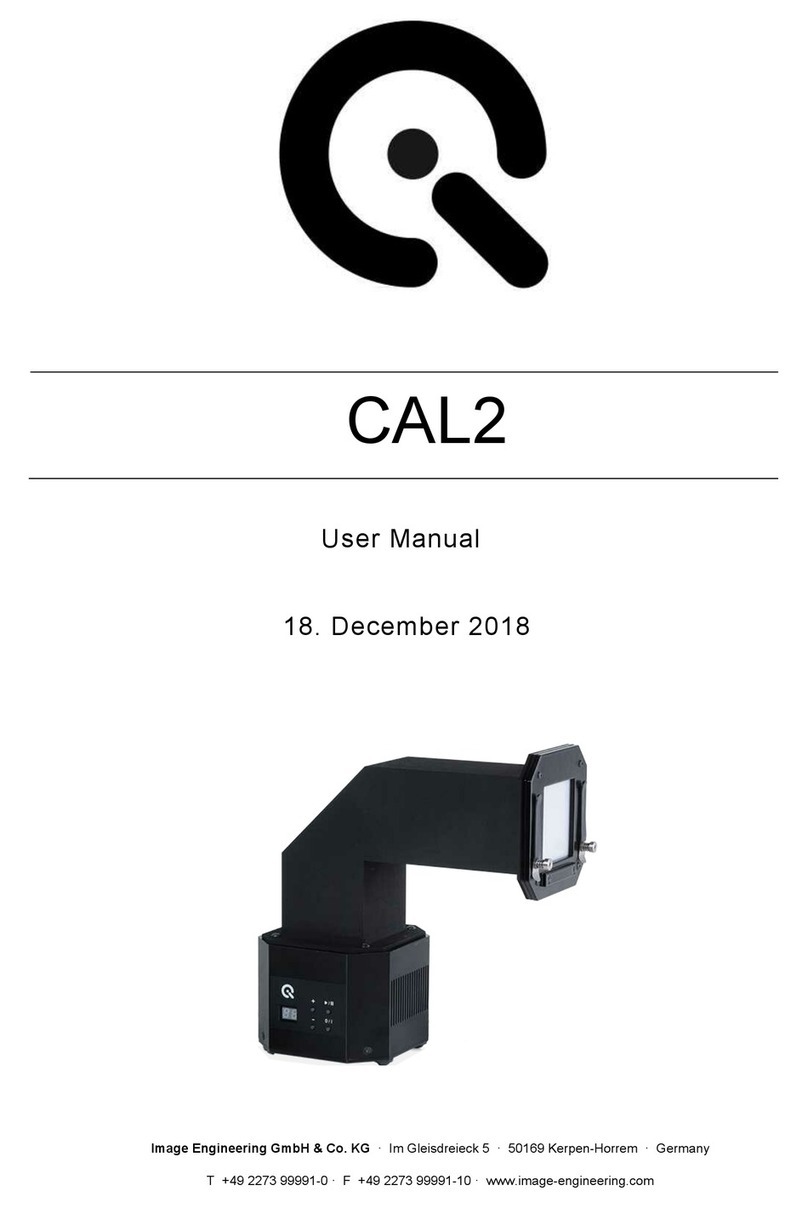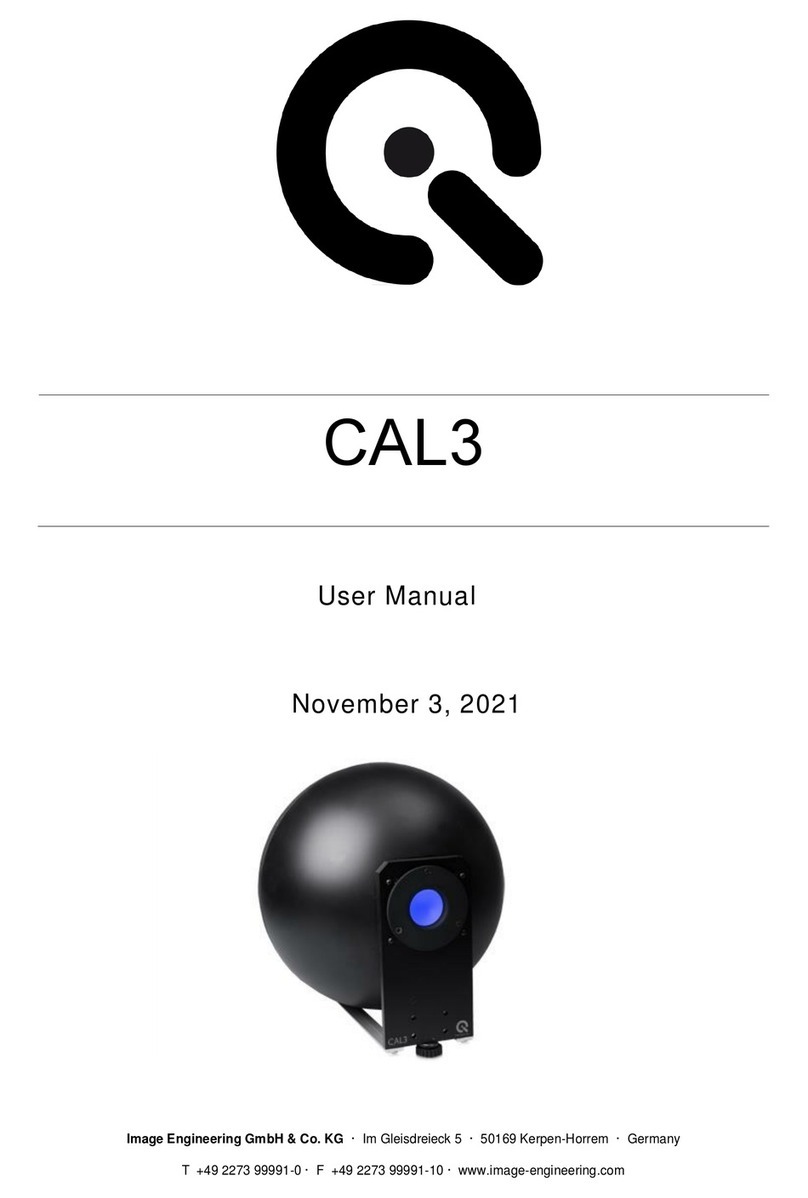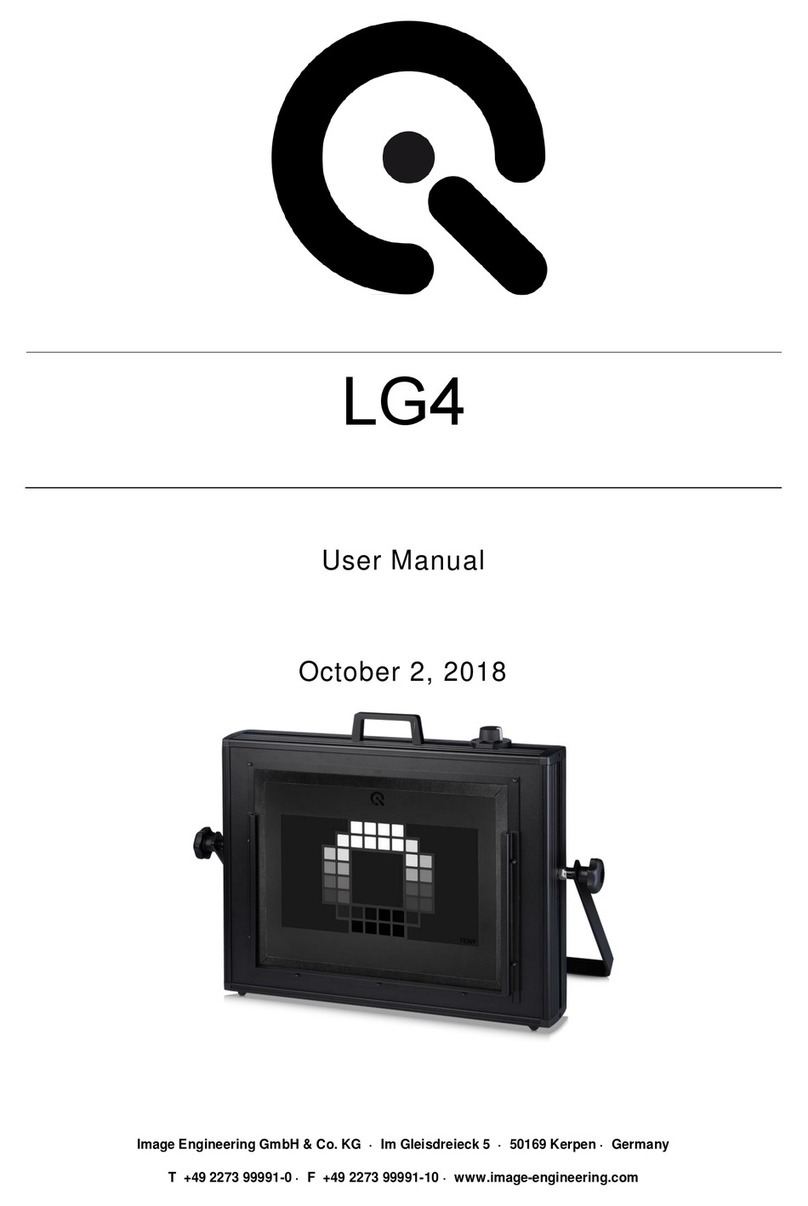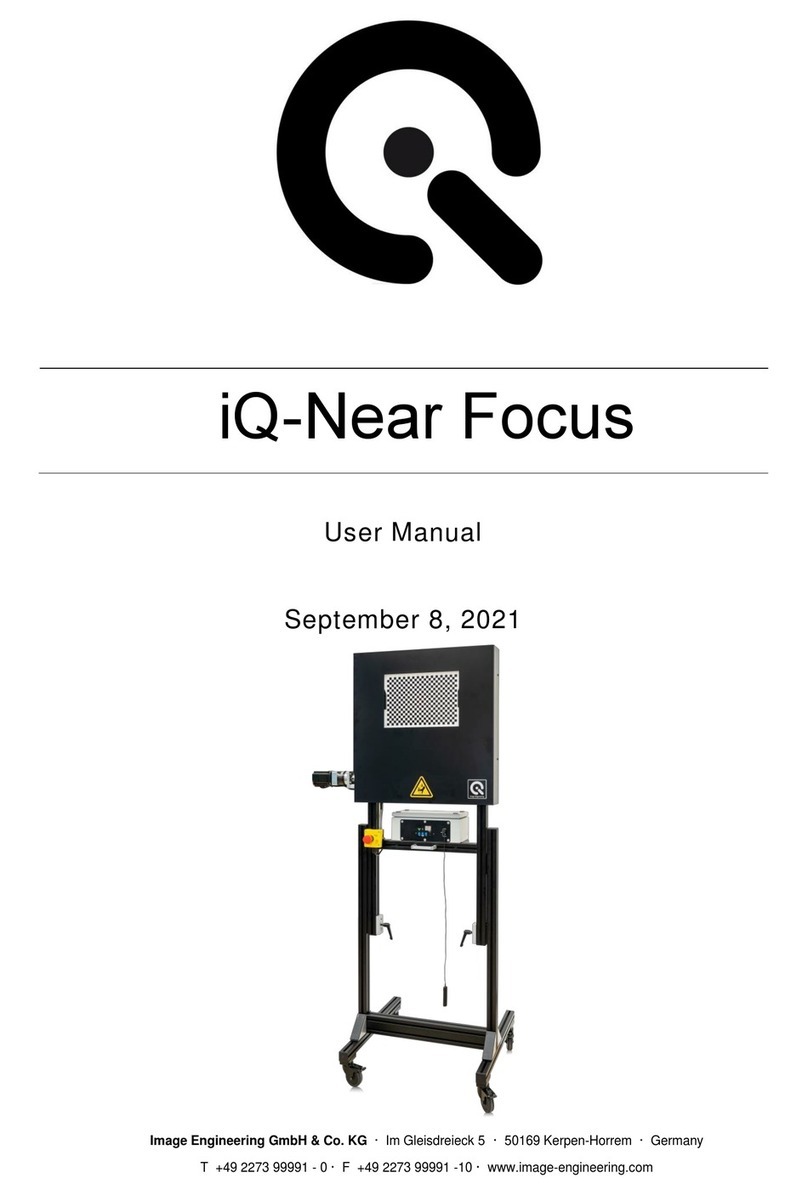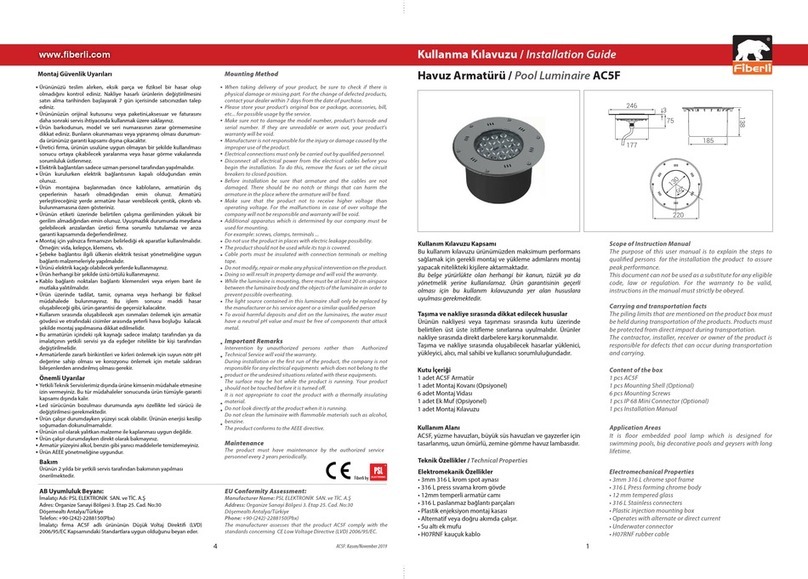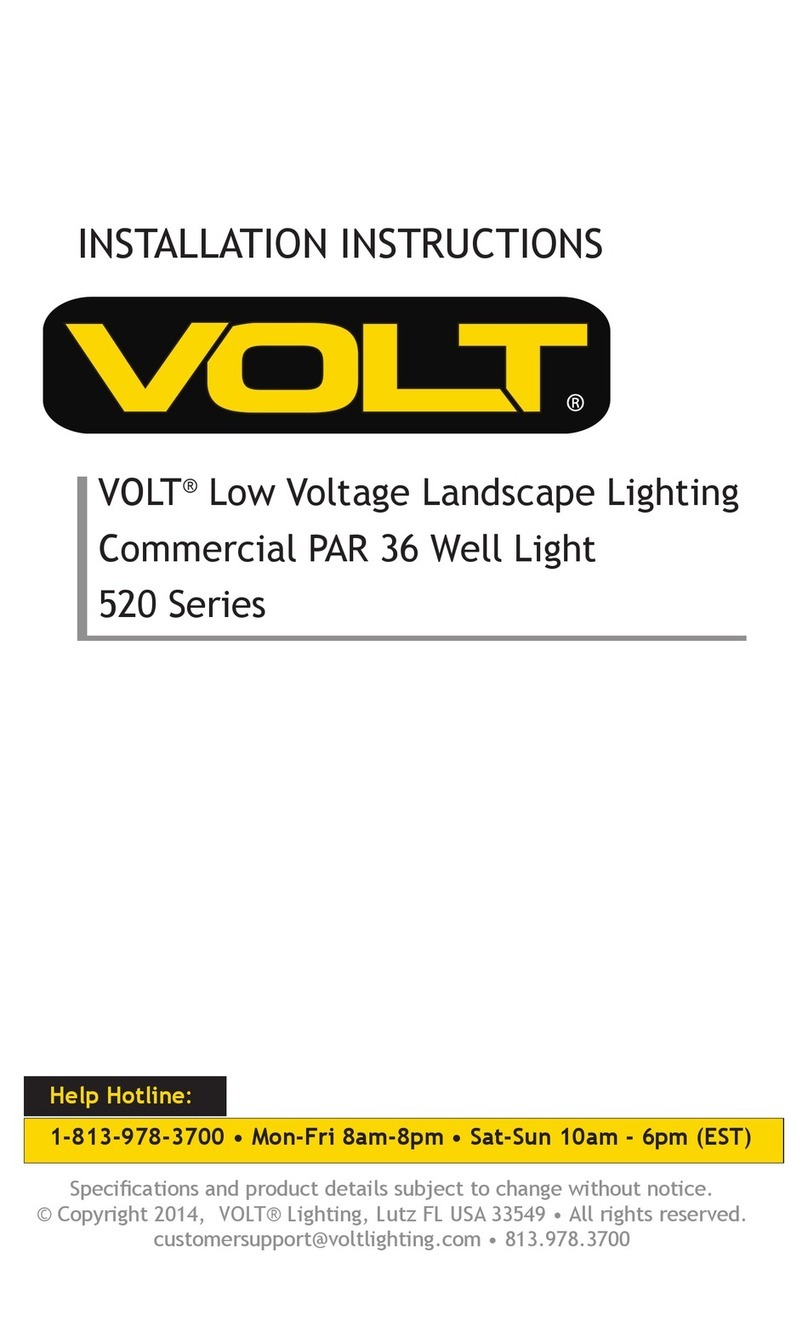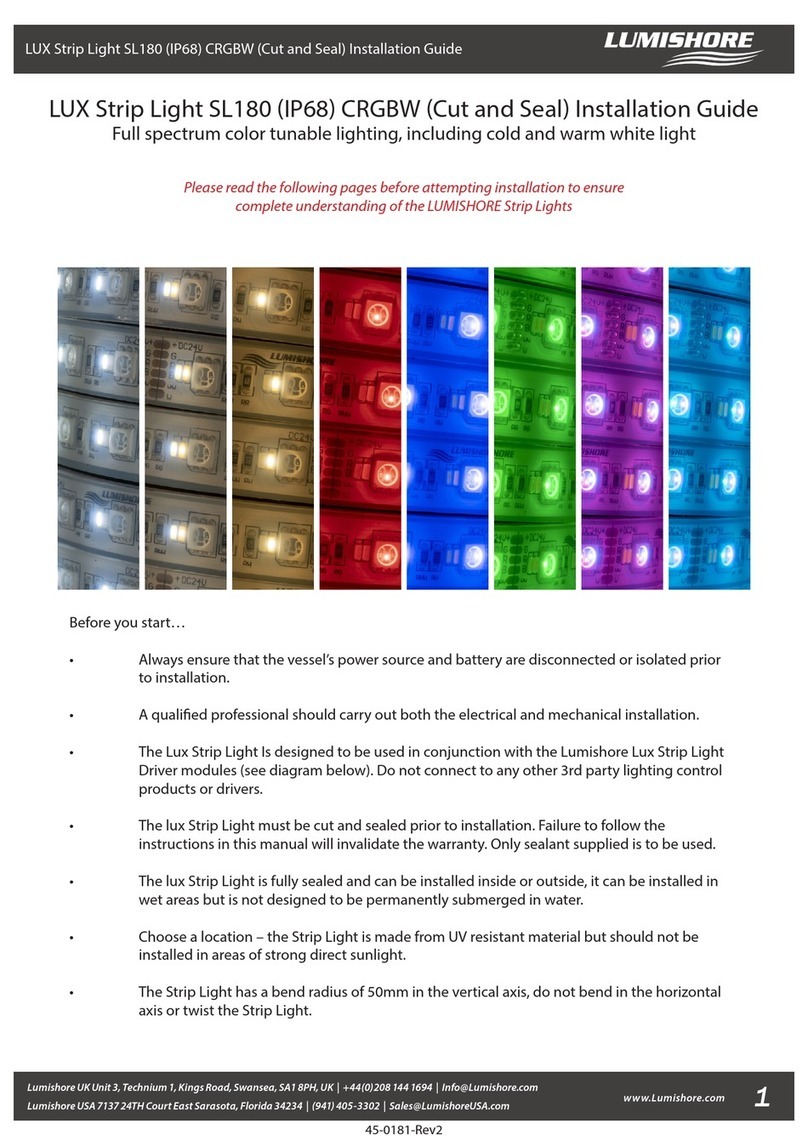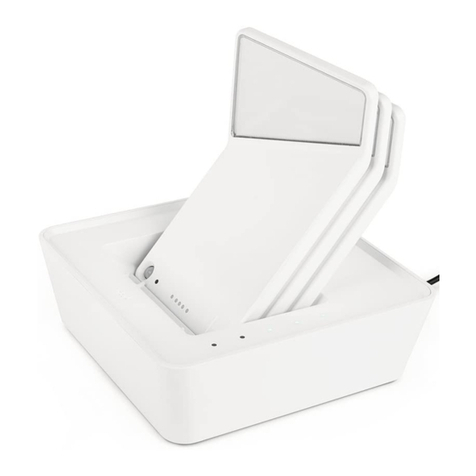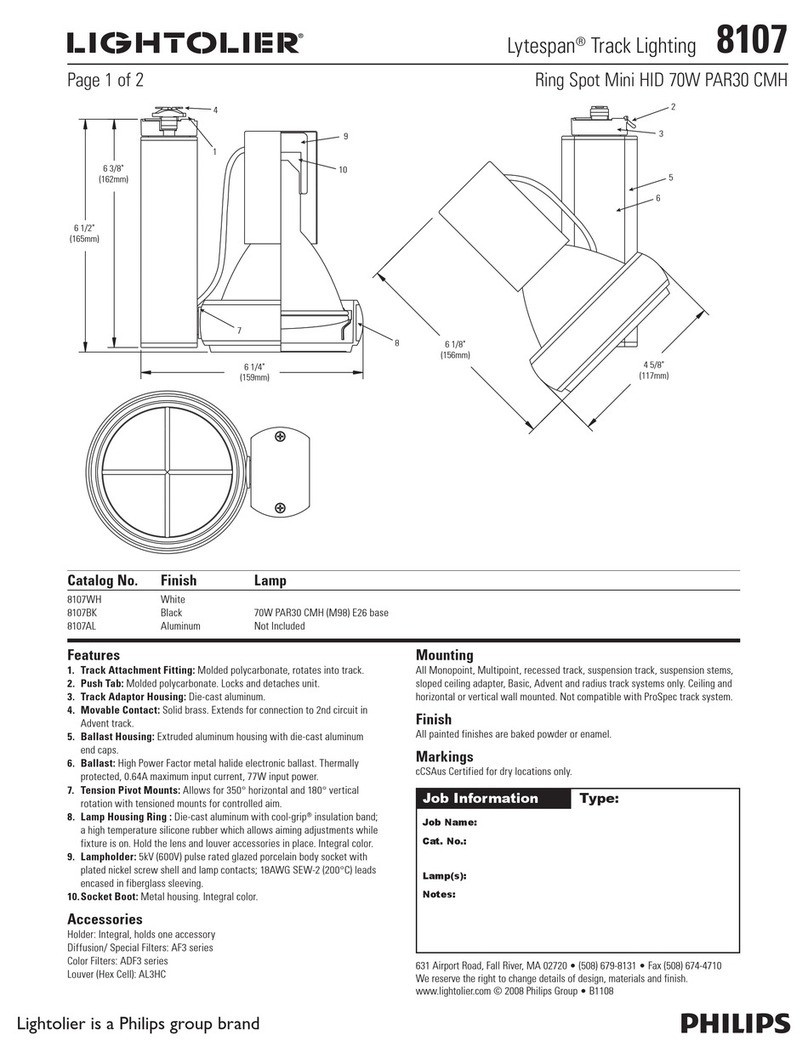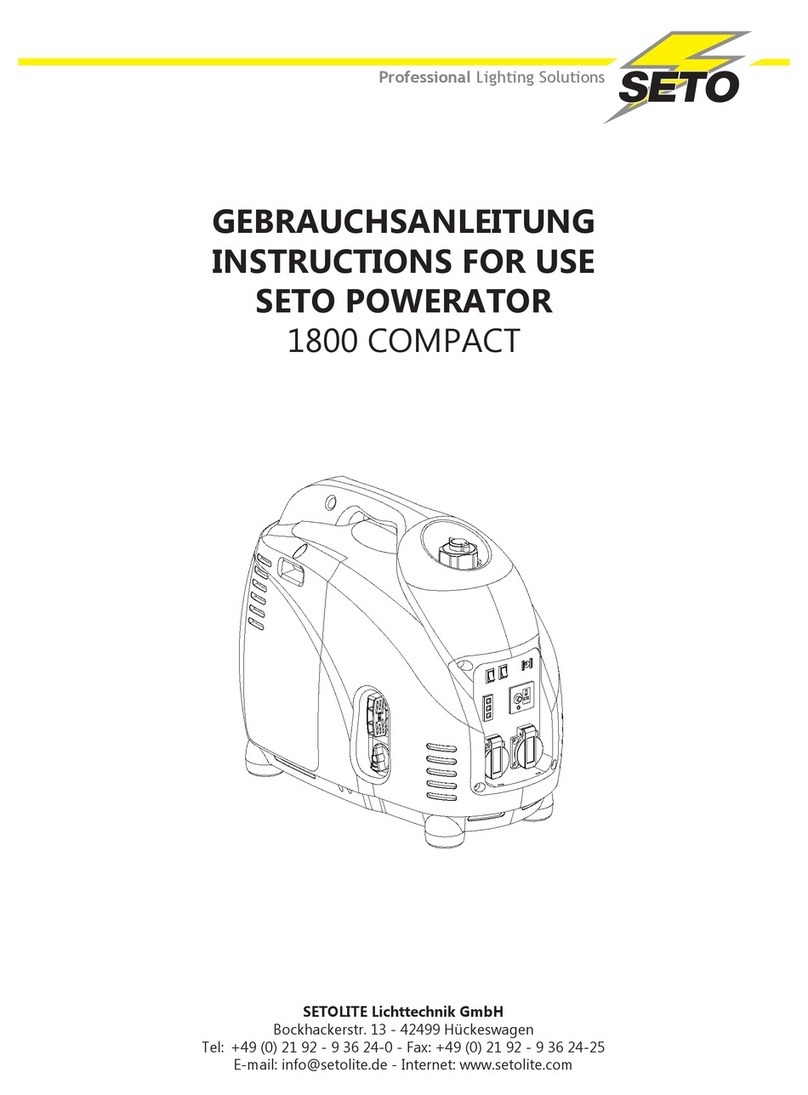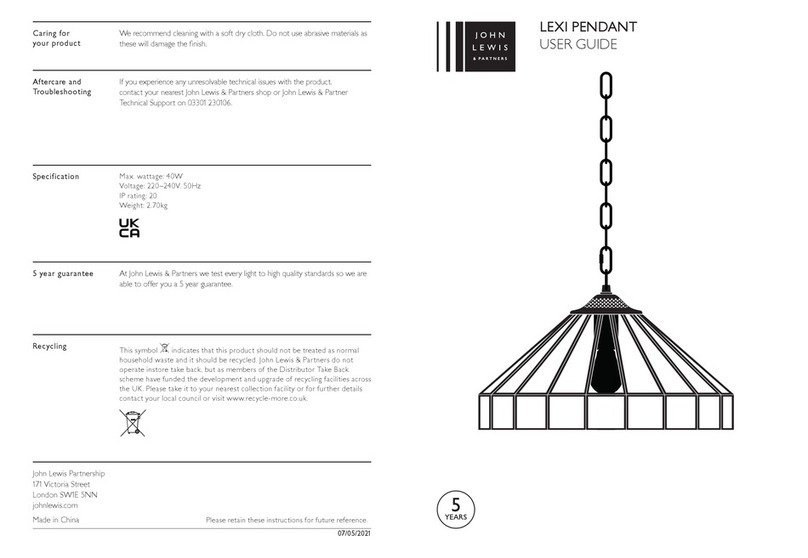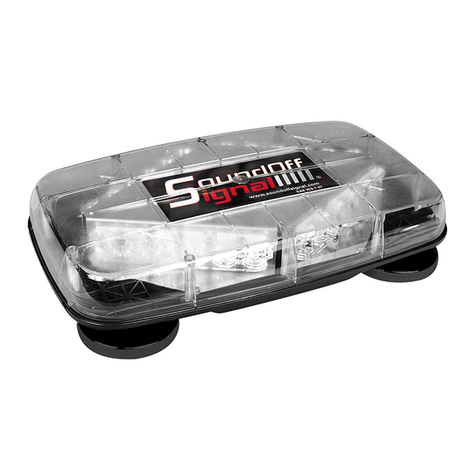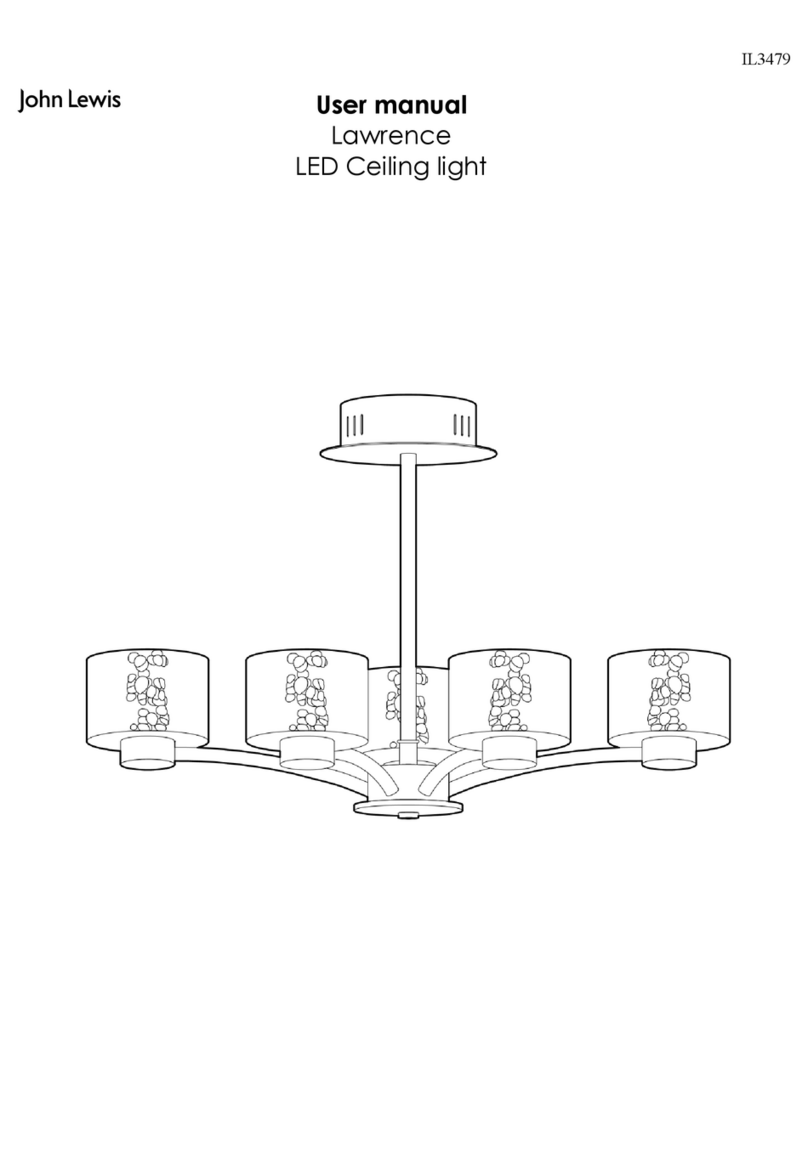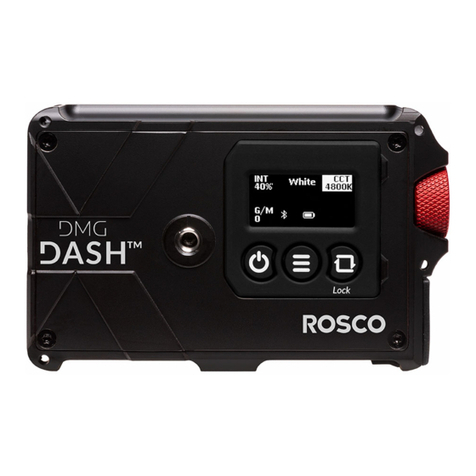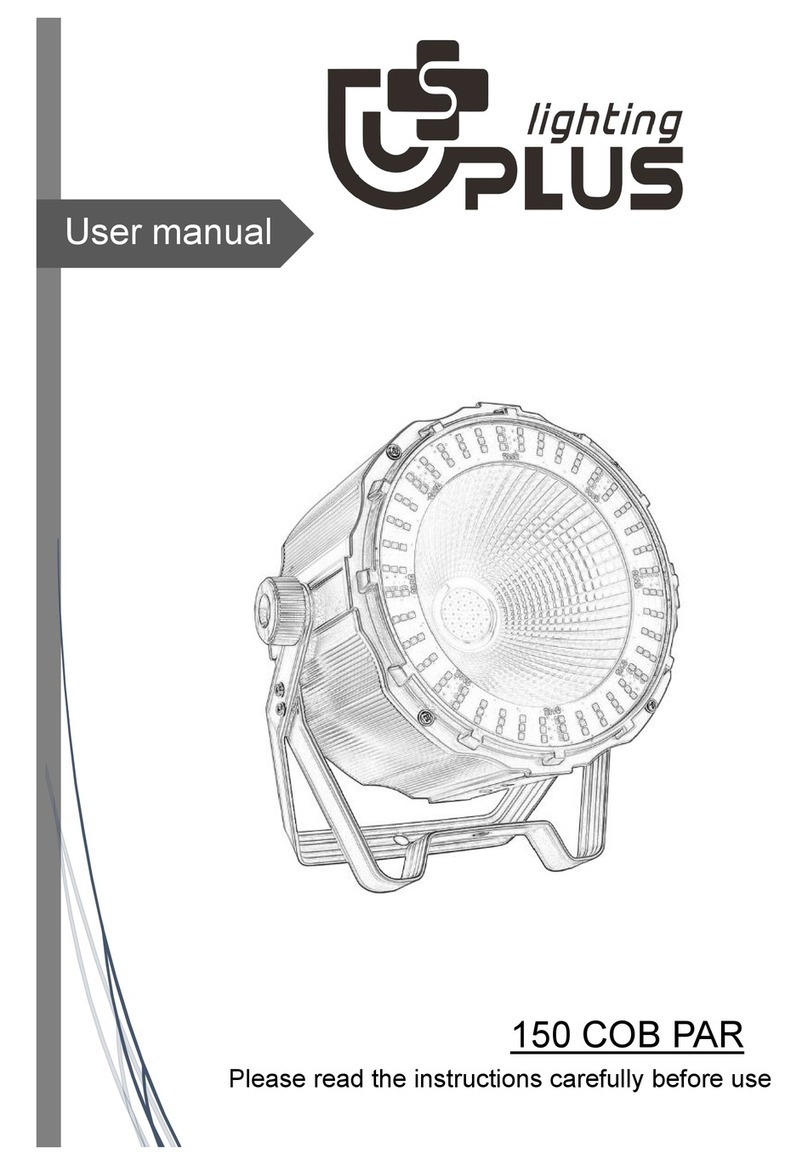
LE7
Image Engineering 4
III USING YOUR LE7
After installation start the iQ-LED control software to use your LE7 with the transparency chart of your
choice. Before the first use it is recommended to calibrate your device, please follow the instruction in
your iQ-LED control software quic start guide or manual.
Also for usage of all Illumination funcionalityie please follow the quic start guide or manual of the iQ-
LED control software.
IV LOW INTENSITY USE
When using your system with very low intensity, the spectral measurement values will start to
fluctuate. The lower the intensity, the higher is the fluctuation. That does not mean that the generated
light is instable. The fluctuation of the values is caused by noise of the spectral measurement of the
internal spectrometer. The influence of the noise gets higher, the lower the light intensity is. When
using standard illuminants with intensity lower than 25lux it is not possible to get any approximately
correct value any more. If very low light intensities are required, please use a neutral density filter and
activate the neutral density correction in the iQ-LED control software. This way the light source will run
at higher intensity while having low intensity in the chart plane.
V CALIBRATION / LED DEGRADATION
5.1 iQ-LED spectral calibration
The LEDs of the iQ-LED inside the LE7 are of many different types and wavelengths. Some LEDs will
change their intensity level and pea wavelength a bit in the first 500 wor ing hours because of a burn
in effect. The LEDs also will degrade in intensity over their whole life time. To ma e sure that all
measurements, the auto generate and the standard illuminants are correct, you have to perform a
spectral calibration regulary. Also you have to consider the degradation of the LED when saving self
defined presets. If you save a preset with LED channels that uses its maximum intensity, it might be
that this intensity can not be reached after the burn in time or a long time degradation of the LED
anymore. In this case you will get a warning message from the iQ-LED control software.
While the first 500 wor ing hours it is recommended to perform a spectral calibration every 50
operating hours. After the first 500 operating hours a calibration of every 150 wor ing hours suffices.
Indications for a necessary spectral calibration is a not satisfying generate, aberration of the intensity
values or that the spectral curve of the predefined standard illuminants fit not to the corresponding
preset.Before performing a spectral calibration ma e sure:
•the spectrometer wor s correct
•the spectrometer settings are correct
•all LED channels wor correct
•the dar measurement is correct
•your measurement environment is correct
•the ambient temperature is correct
How to perform the spectral calibeation is described in the iQ-LED control software manual.






